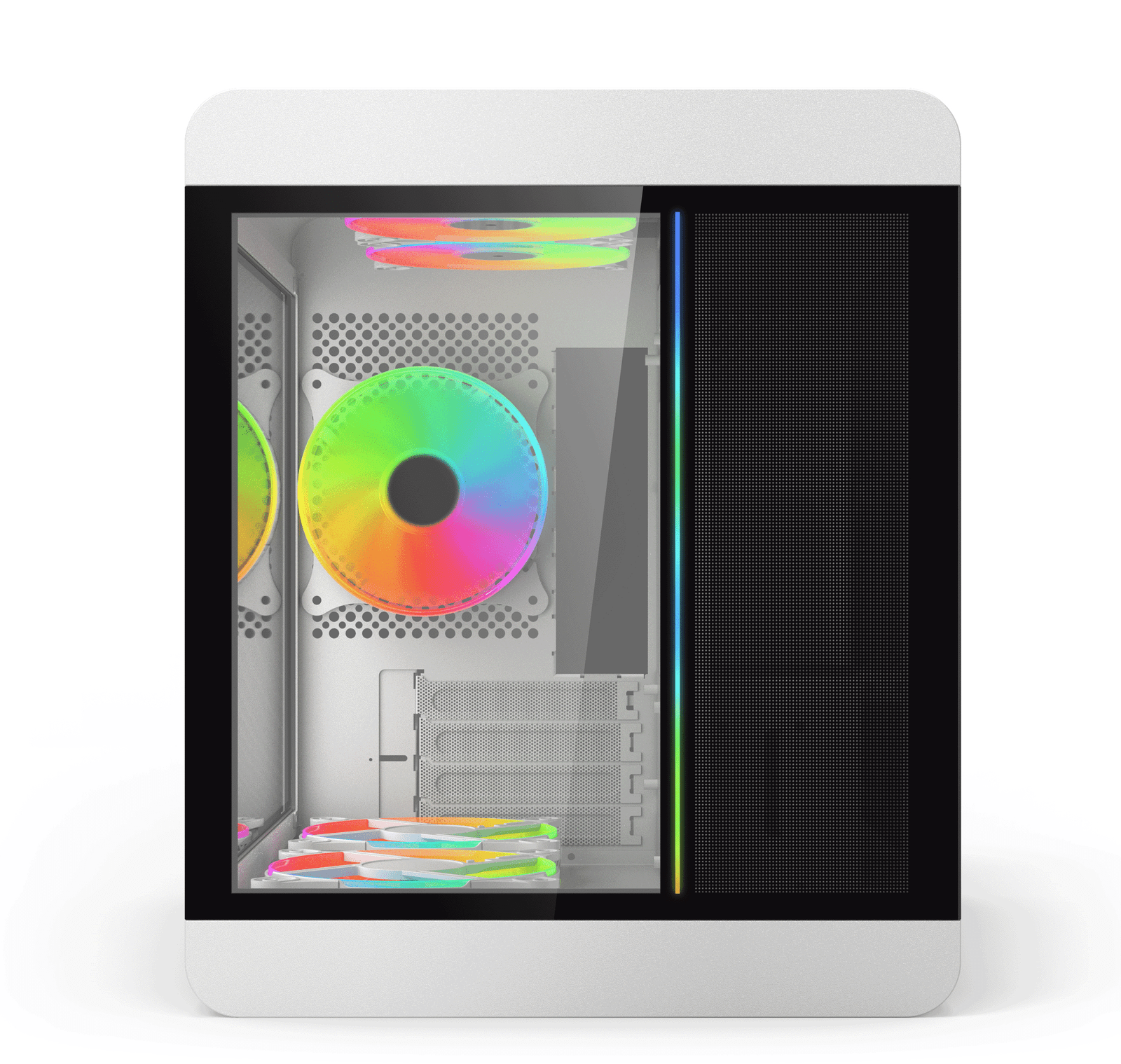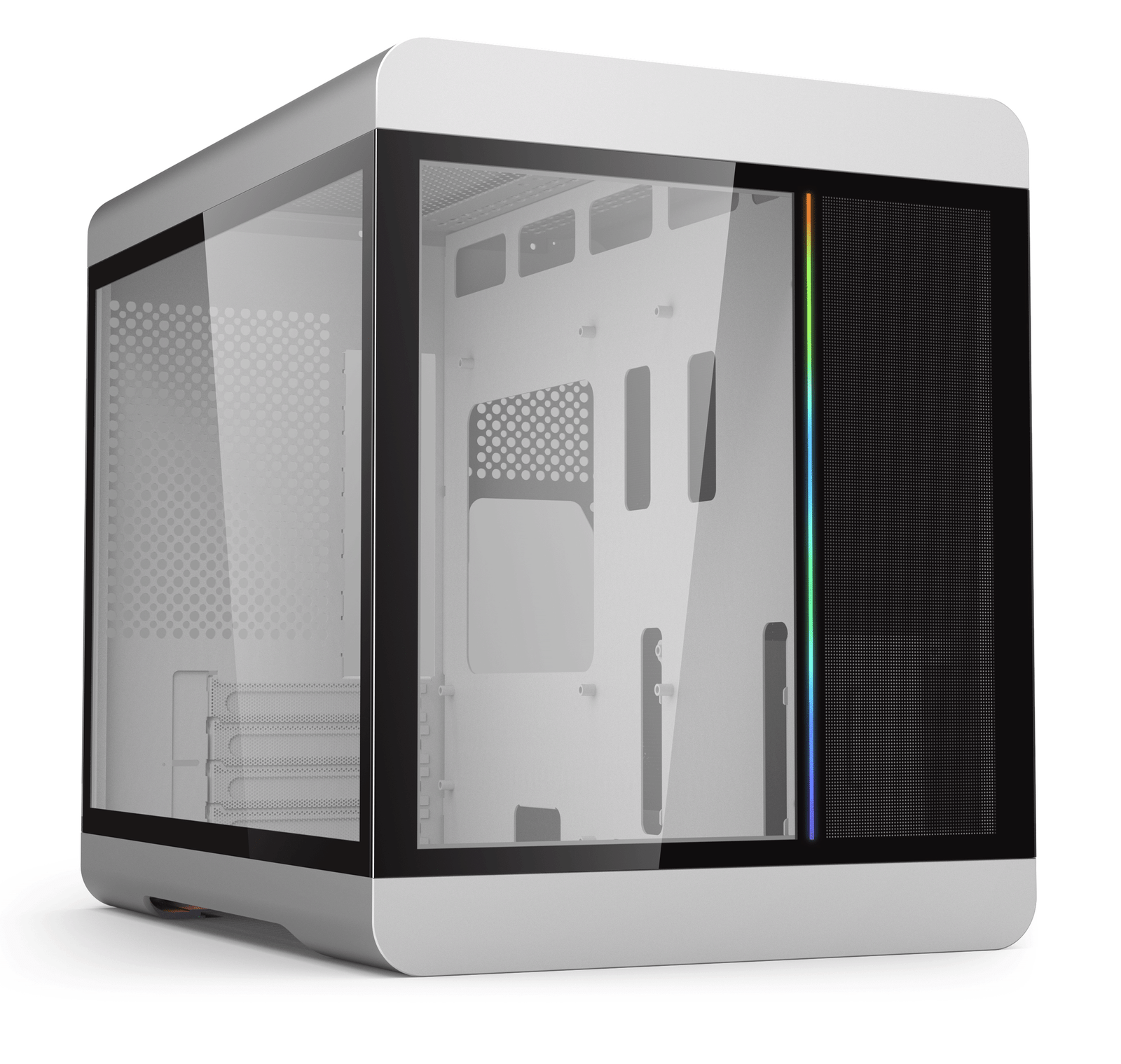KZ-36T Arc
$100.00
Despite its lightweight nature, aluminium is durable and resistant to corrosion. This ensures a long lifespan for the computer chassis, even in varying environmental conditions. Aluminium is also highly recyclable, making it an environmentally friendly choice. Using recycled aluminium in manufacturing helps reduce the overall environmental impact of producing computer chassis.
Heat Dissipation
Aluminium has excellent thermal conductivity, meaning it can efficiently dissipate heat. This is crucial in a computer chassis where heat generated by components like the CPU and GPU needs to be effectively managed to prevent overheating. It is also effective at blocking electromagnetic interference (EMI), which can help in reducing electronic noise and ensuring that the components inside the computer are not affected by external electromagnetic signals.


Anodised Aluminium
Constructed of 2.0mm Aluminium and 1.0mm SPCC. Aluminium is a lightweight metal, making it easier to handle and transport. This is especially important for users who may need to move their computer frequently. Aluminium provides a good balance of rigidity and flexibility, allowing for a sturdy chassis that can protect internal components while also allowing for some flexibility to absorb shocks and vibrations

Micro ATX Motherboard Support
High airflow, compact design
Specifications
- 332 (H) 365 (L) 275 (W) mm
- Micro ATX / ITX
- Supports 2 x 3.5″ HDD / 3 x 2.5 SSD
- fan support – 5 x 120 mm
- Supports GPU up to 350 mm
Frequently asked questions
Improved Airflow: Mesh PC cases typically have a more open design with perforated metal panels, allowing for better airflow compared to solid panels like glass. This helps in keeping the components cooler, which can result in better performance and longevity.
PWM case fans have an advantage over DC case fans in terms of airflow, as they can spin faster when the system is hot and generate more airflow
The size of the computer case depends on your motherboard form factor and the components you plan to install. Common sizes include ATX, Micro-ATX, and Mini-ITX. ATX is the most common and offers the most space for components, while Micro-ATX and Mini-ITX are smaller and more compact.
No, not all computer cases are compatible with all motherboards. Computer cases are designed to fit specific motherboard form factors, such as ATX, Micro-ATX, and Mini-ITX. It’s important to check the compatibility of your motherboard with the case you choose.
Look for features such as ample space for cable management, good airflow with fan mounts, removable dust filters, tool-less drive bays, and ample space for expansion and upgrades. Additionally, consider the aesthetics and any specific requirements you may have, such as RGB lighting or tempered glass panels.
Airflow is crucial for maintaining optimal temperatures for your components, especially the CPU and GPU. A case with good airflow helps dissipate heat effectively, preventing overheating and potential damage to your hardware. Look for cases with well-placed fans, mesh panels, and proper ventilation.
Not all computer cases are designed to accommodate liquid cooling systems. Look for cases with radiator mounts and enough clearance for your chosen liquid cooling solution. Some cases are specifically designed with liquid cooling in mind and may have dedicated mounting points and support for radiators of various sizes.
Check the maximum GPU length supported by the case and compare it with the length of your graphics card. Ensure that there is enough clearance between the GPU and other components, such as drive bays and the power supply. Some cases also have removable drive cages to accommodate longer graphics cards.
Cable management involves organizing and routing cables inside the computer case to improve airflow, aesthetics, and ease of maintenance. Proper cable management can help prevent airflow obstructions, reduce clutter, and make it easier to upgrade or replace components in the future.








